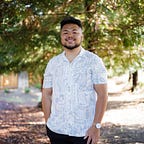Products Speak to Our Identities
Products can be an extension of your identity and for me, I draw inspiration from my culture.
Our Identities are Tied to our Careers
Careers make up a significant part of our identities. They are representative of our values and interests, they influence the way others view us, and essentially, serve as one of, if not, the primary vehicle through which we contribute to society and leave our mark on this Earth. To my last point, they can shape the way we will be remembered.
For instance, large tech company CEOs like Mark Zuckerberg would probably agree with the public that they are technology innovators. When asked about themselves, MMA fighters commonly answer first by saying they are championship-caliber fighters. Meanwhile, entrepreneurs commonly say they are just that — entrepreneurs — looking to make a dent in this world by operationalizing their innovative ideas. These examples portray how people often define themselves by the careers they uphold.
Furthermore, in the case of entrepreneurs, the ventures they pursue and the product they create are often reflective of their passions and skills. This could be a skilled, young coder looking to develop the next big app that they’ve been cheffing up since their good ol’ college days or a candy connoisseur looking to manufacture healthy candy and get ahead of today’s shifting health-is-everything culture.
Other Parts of Our Identity Can Shape the Products We Build
Although I’m not a self-proclaimed entrepreneur, every now and then I enjoy dabbling with product ideas with friends. And this, mixed with my interests in social innovation and more broadly, social justice and impact, can make for some very interesting conversations.
On one occasion, I had a refreshing discussion with my Filipina friend about the lack of Filipino leadership here in the States and how one my ambitions is to create a company and product that is led and created by Filipinos. This issue of lack of Asian representation in leadership roles is called the Bamboo Ceiling, which theorizes that
while Asian Americans have attained high status in various [areas like population size, education, and income], they still experience challenges in reaching executive and management positions in corporate America, higher education, and other organizations.
During this back-and-forth bitter rant about the Bamboo Ceiling, I floated an idea to build a product with my Filipina friend that was representative of the values of our Filipino culture and by inheritance, our own values.
And so, I want to share a case about a product I imagineered with my friend to show how I drew inspiration from my cultural identity to build a product that I was passionate about and representative of who I am.
Our Product Idea: Tayo
While trying to devise this product, my friend and I were undergraduate students at the time in the midst of the stresses of midterms and tight deadlines. However, being at such a large, yet competitive and under-resourced university, we often faced the issue of not having enough resources, or colleagues, to help us adequately prepare for exams and confidently submit assignments. Thus, came the idea of Tayo: an app-based product that matches study partners together based on a variety of factors.
Here are the slides from our pitch deck that would outline key components of the potential customer base, core issue and solution, operating environment, and the product’s features.
Final Thoughts
The name, Tayo, translates in to “us” or “we” in Tagalog, and the product itself, stands on the core Filipino principle that overcoming things together (in the Philippines, having a village mindset is very common) is more effective than working separately (a mindset that is much more prevalent in Western and often, individualistic societies).
By reading this pitch deck about a product I helped devise, you learned more about my culture and values, which ultimately comprise some of the key pillars of my identity. And so, I’m hoping this blog changed your perspective on what products mean and what they can stand for. Thanks for reading.
